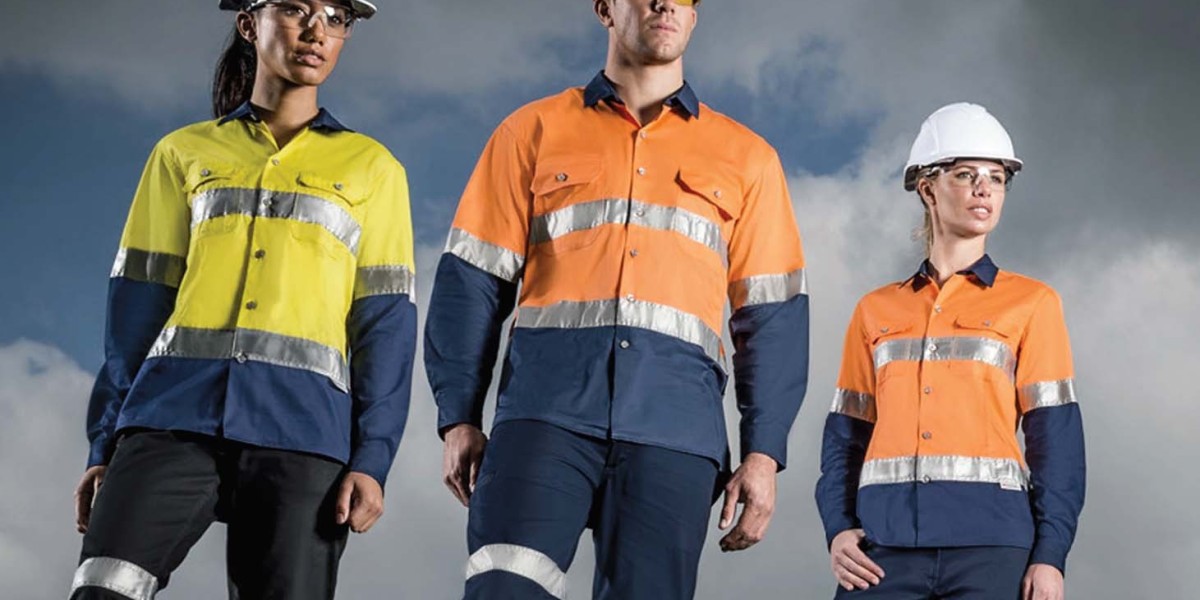What Is Hi-Vis Clothing?
Hi-Vis clothing refers to garments made with fluorescent materials and reflective strips that make the wearer more visible to others, particularly in dim or hazardous conditions. These garments are most commonly used to:
Alert vehicle operators of a worker’s presence
Improve visibility in foggy, dark, or crowded environments
Enhance safety during nighttime operations
Common types of hi-vis clothing include:
Vests and jackets
Trousers and overalls
T-shirts and long-sleeve tops
Rainwear with reflective detailing
The Importance of Hi-Vis Clothing
Visibility is a crucial safety factor in many work settings. When workers can be easily seen, especially by moving machinery or vehicles, the risk of accidents significantly decreases. The benefits of hi-vis clothing include:
Reduced likelihood of collisions and injuries
Improved safety for night or low-light shifts
Increased awareness of workers’ positions and movements
Enhanced compliance with safety regulations and standards
In environments such as road construction or industrial facilities, hi-vis apparel isn't optional—it’s life-saving.
Key Features of Effective Hi-Vis Clothing
To serve its purpose, hi-vis clothing must meet strict performance standards and be appropriate for the specific job environment. High-quality garments will offer:
1. Fluorescent Colors
Typically yellow, orange, or lime green, these colors catch ambient light during the day and improve visibility in natural settings.
2. Reflective Strips
Strategically placed reflective tape bounces back light from headlights or flashlights, increasing visibility at night or in dark environments.
3. Durable and Weather-Resistant Materials
Hi-vis gear should withstand tough conditions—rain, wind, heat, or cold—while maintaining its reflective and protective qualities.
4. Comfortable Design
Breathable fabrics, adjustable fits, and lightweight materials help workers remain productive and focused throughout their shifts.
5. Compliance with Safety Standards
Effective hi-vis garments comply with international safety regulations such as ANSI/ISEA or EN ISO standards, ensuring reliable performance and visibility.
Industries That Rely on Hi-Vis Clothing
Many sectors depend on hi-vis gear to keep their employees safe, including:
Construction and roadwork
Railway and airport operations
Warehousing and logistics
Emergency services and first responders
Utility and maintenance work
For each role, there are specific visibility requirements based on lighting conditions, proximity to moving vehicles, and work environment complexity.
Choosing the Right Hi-Vis Garments
Not all hi-vis gear is the same. Employers should select clothing based on:
Work environment (indoor vs. outdoor)
Time of day (daylight vs. night work)
Weather conditions and exposure
Required mobility and comfort
Layering options, water resistance, and ventilation are also important considerations depending on the climate and work intensity.
Maintenance and Replacement of Hi-Vis Clothing
Hi-vis clothing must be well-maintained to remain effective. Dirt, wear, and repeated washing can reduce its reflective capabilities. Employers and workers should:
Inspect garments regularly for fading or damage
Replace items that no longer meet visibility requirements
Store workwear properly to prevent unnecessary wear
Worn-out hi-vis gear can become a hazard rather than a help.
Conclusion: Be Seen, Be Safe
Hi-vis clothing is a vital component of occupational safety across countless industries. By ensuring workers are clearly visible, even in challenging conditions, employers dramatically reduce the risk of accidents and create a safer, more efficient workplace. Investing in high-quality, compliant hi-vis garments is not only smart—it’s essential to a proactive safety culture.









